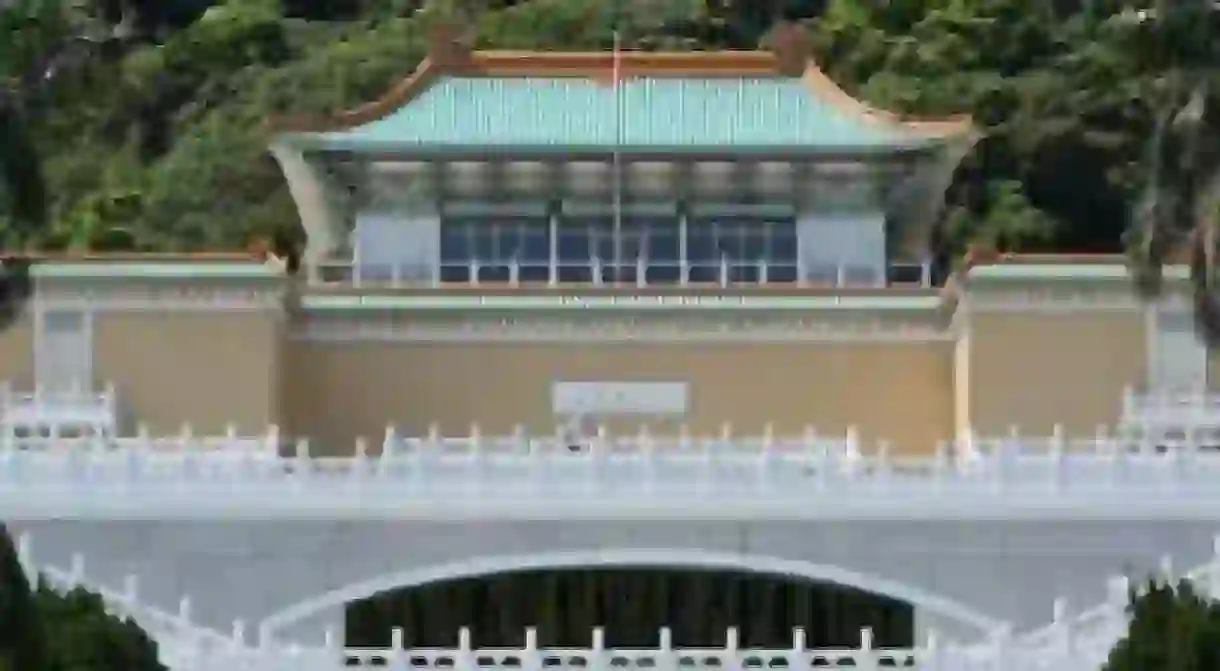The Dramatic Story of Chinese Art at Taipei’s National Palace Museum

Housing over 690,000 artefacts, the National Palace Museum in Taipei is a treasure trove of Chinese culture. Evacuated from the Forbidden City to Taiwan in 1948 amidst the panic of the Chinese Civil War, the collection provides an in-depth view of the beauty of Chinese history from the Neolithic to the modern era.

The National Palace Museum, founded in 1965 in the Shilin district of Taipei, Taiwan, currently houses over 690,000 artefacts from the Neolithic to the modern era with the majority of the items coming from the Song, Yuan, Ming and Qing dynasties. The collection covers over 8,000 years of Chinese history, and is the largest collection of ancient Chinese artefacts and artworks in the world.
The story of The National Palace Museum begins in the Forbidden City in Beijing, with the establishment of the Palace Museum in 1925. The Palace Museum was designed to preserve the Imperial Family’s extensive collection of artworks, artefacts and other palatial treasures from previous Chinese dynasties that had been collected for inventory following the expulsion of Emperor Puyi the previous year. In particular, the Palace Museum’s role was to protect this invaluable collection during wartime and many more artefacts were moved there at the outbreak of the Chinese Civil War in 1927. During the first part of the war, elements of the collection were moved throughout China, finally being shipped back to Nanjing, in 1945 following the surrender of the Japanese army. However, in 1948, resumed fighting between the Nationalist and Communist armies in China took a turn for the worse. In the ensuing panic, the Central Government made the decision to evacuate the most precious items in the collections of both the Palace Museum and the Preparatory Office of the National Central Museum (established in 1933) to Taiwan. This historic decision marked the birth of the National Palace Museum.

In the evacuation over 2,972 crates of prized artefacts were transported from the Forbidden City to Taiwan along with 852 crates from the Preparatory Office of the National Central Museum. The entire collection was impossible to relocate as, by 1949, the Communist army had taken control of the Palace Museum and the remaining artefacts. At the time, the collection from the Palace Museum included 46,100 antiquities, 5,526 paintings and calligraphies, and 545,797 rare books and documents. Although extensive, this collection accounted for only 22% of the artefacts originally transported south from Beijing. The collection from the National Central Museum included 11,047 antiquities, 477 painting and calligraphies, and 38 rare books and documents resulting in a combined total of 608,985 cultural relics.
Although the collection resided in Taiwan from 1948, the National Palace Museum itself was not inaugurated until 1965. The collection was first stored in a purpose-built vault in Beikou in Wufeng, Taichung County, in order to create an inventory and comprehensive catalogue of all the 608,985 relics, later published as The Collection of Chinese Artefacts series. The Exhibition Office in Beikou was opened to the public in 1957 leading to a major exhibition, Chinese Art Treasures, in 1961. The collection finally relocated to the newly constructed National Palace Museum, its final resting place, in the Taipei suburb of Waishunaxi in 1965.

The National Palace Museum‘s current collection has been supplemented over the years by acquisitions made following its official inauguration in Taiwan. These additions include donations, purchases and transfers from other institutions. The scope of the Museum has therefore continued to expand since its inception. Their collection currently consists of paintings from the Tang dynasty to the modern era including Zhang Zeduan’s famous Along the River During the Qingming Festival, calligraphy, rare books and documents, ceramics, bronzes and jades, including the notable Jadeite Cabbage with Insects from the Ch’ing dynasty (1644-1911) along with other items of interest.
The Museum’s extensive exhibition programme includes a three-month rotation of the permanent collection enabling visitors to view up to 3,000 pieces of the collection at any one time. This is accompanied by a series of curated exhibitions featuring both historic and modern artefacts and artworks such as the Four Great Masters of the Ming Dynasty exhibition and the Famous works of Modern Chinese Painting and Calligraphy exhibition.

In recent years the Museum’s digital presence and use of new technologies has developed, resulting in the creation of several new exhibitions and spaces dedicated to new media including a permanent Multimedia Gallery of Painting and Calligraphy. The National Palace Museum introduced the continuous Painting Animation exhibition in 2011, creating an environment of virtual paintings through six full-size projected animations of famous artworks including Along the River During the Qingming Festival.
Since 1988 the National Palace Museum has also been working on a complete digitisation of their collection. This not only serves to preserve, manage and archive the artefacts and artworks, but has been an inspiration to a number of new-media artists who have used new technologies to animate and reinterpret selected objects, forming interactive animations and story-telling devices throughout the museum. The digital collection of over 690,000 items, also known as the New Waves of NMP Travelling Exhibition also enables other international institutions to exhibit works that otherwise never leave the museum’s walls.
Over the years, the National Palace Museum has undergone numerous expansions including a five-year modernisation of two-thirds of the museum between 2002 and 2007. The resulting structure is a stunning home for this incomparable collection, which not only showcases the finest historical and modern Chinese artefacts but also tells the fascinating story of its dramatic past.













